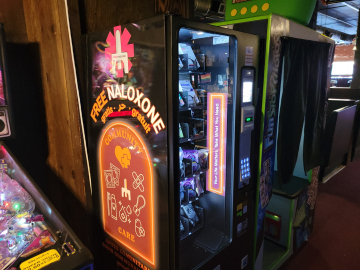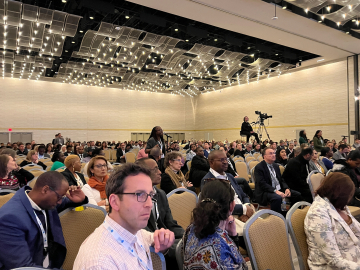End the War on Drugs and Help People
“You can’t arrest your way out of the problem.”
Nowadays we hear this all the time about drug use. People have finally realized that arrest and incarceration isn’t the solution to drug use in our communities.
In fact, they have just made things worse.
Consider: Federal and state governments spent an estimated $56 billion in 2011 on substance use-related arrests, adjudication, incarceration, and community supervision. Add to that $40 billion in the lost productivity of people arrested and incarcerated on drug-related offenses. Yet there is no evidence that this incredibly expensive policy has reduced drug use.
One result it clearly did deliver: Ruined communities.
For the past half-century, the failed “war on drugs” was fought by police primarily on urban, African American communities. The war meant prosecution for possession of small amounts of illicit substances, engagement in low-level drug selling, and even loitering. This led to widespread arrests throughout communities, primarily focused on young African-American men who are still incarcerated at a substantially higher rate than other populations. A majority of their arrests are driven by engaging in drug use or the drug economy. The details are startling. In 2013, incarceration rates for blacks across all age ranges were 6X those for whites. 18- to 19-year-old black males are 9X more likely to be incarcerated than their white counterparts. Black females of that age are 5X more likely to be incarcerated than their white peers. Needless to say, this has caused much more harm than good.
The scale of the current opioid epidemic demands better solutions. One approach that both public health and public safety fields can embrace is harm reduction—practical strategies that lessen drug use’s negative consequences.
One model harm-reduction initiative is the Law Enforcement Assisted Diversion program, which was adopted in Seattle in 2011 and is being replicated in more than a dozen cities across the country. LEAD is a pre-booking diversion program that directs low-level drug offenders and sex workers to social services rather than the criminal justice system.
Rooted in harm reduction as well as health equity and racial justice, LEAD was born of a unique collaboration between public health professionals, public defenders, prosecutors, and police. Its goal was to respond to disproportionate arrests of African Americans in a commercial district in King County, Washington. Its primary aim is to interrupt the cycle of police interaction and individual incarceration that perpetuates social, racial, and health inequities.
The program has a proven track record of success. For 6 months after entering LEAD, 203 clients studied had a 60% reduction in the odds of being arrested. And nearly half of all clients reported little to no further contact with law enforcement after LEAD involvement.
LEAD and similar programs represent a new way of thinking about drug use, its causes, and community responses. They provide a much-needed culture shift for criminal justice agencies that have for far too long been tasked with managing our societal dysfunction. Having law enforcement connect people with needed health and social services instead of locking them up is an important first step. Law enforcement agencies need to provide funding to support these efforts.
But reform should not stop there.
Ultimately, the goal should be to cut out the police middleman as much as possible and fund a more direct line to holistic services such as 24-hour crisis centers and mobile response units staffed with counselors and health care practitioners. It is a part of the reparations that communities of color deserve in response to the collateral damage of the war on drugs. Emergency 911 call operators should be able to send other resources than just police and fire services—saving critical police services for combatting violent crime.
As experts from many different fields gather at the Bloomberg American Health Summit tomorrow in Baltimore, it’s worth recognizing LEAD’s wider lesson: Seemingly unusual partnerships of professionals from diverse fields can lead to better solutions. Complex social problems require holistic and interdisciplinary responses. They benefit from a wider forum in which diverse participants can engage, debate, and create solutions. A single discipline simply doesn’t have all the answers.
From a public health and a public safety perspective, programs like LEAD just make sense in terms of resources and results. It properly aligns people, funding and services in a way that makes for a more cohesive and effective response for helping individuals and communities harmed by drug use.
It’s time to leave the war behind and focus instead on helping people.
Susan Sherman is a professor in the Department of Health, Behavior and Society at the Johns Hopkins Bloomberg School of Public Health. She has conducted harm reduction focused research for the past two decades. Major Neill Franklin (Ret.), a 34-year law enforcement veteran of the Maryland State Police and Baltimore Police Department, currently serves as the Executive Director of Law Enforcement Action Partnership (LEAP). He has been a vocal advocate of drug policy reform since 2001.
Ed. Note: The second annual Bloomberg American Health Summit will convene experts Tuesday, Nov. 12 and Wednesday, Nov. 13 to discuss 5 key areas of US public health. Neill Franklin will be on a panel focused on policing and harm reduction at the Summit the morning of Nov. 12. The Nov. 12 morning plenary will be livestreamed.
Join the tens of thousands of subscribers who rely on Global Health NOW summaries and exclusive articles for the latest public health news. Sign up for our free weekday enewsletter, and please share the link with friends and colleagues: https://www.globalhealthnow.org/subscribe
Police detain a man for suspected drug use in New York City’s South Bronx on June 7, 2017. Image: Spencer Platt/Getty




